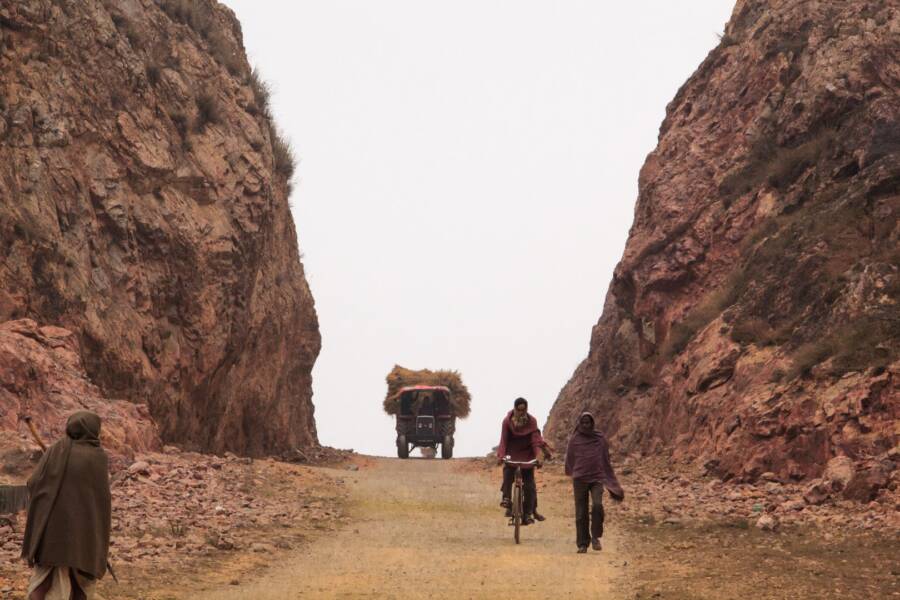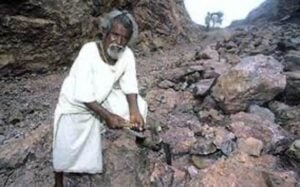The Secret to Moving Mountains - Food for Thought

Do you know the story of Manjhi, the Mountain Man?
It’s an amazing, well documented story of a man who literally moved a mountain.
The story goes like this: in 1959, Dashrath Manji, his wife Phaguniya, and their little boy lived in a village in India called Gehlaur. Phaguniya, pregnant with a little girl, needed medical care. The closest doctor was around the other side of a mountain. The only way to get there was to travel the 70-kilometer journey around the mountain, or to go over it. She chose to go the most direct way – over it. While making the treacherous journey, she fell and died in childbirth.
Shortly after Phaguniya’s death, Manjhi picked up a chisel. Determined to create the path that would have prevented his own family’s tragedy, he began hammering at the mountain, one rock at a time.
For 22 years, Manjhi chiseled away at the mountain.
The locals thought he was a lunatic. Who in their right mind would believe that they could move a mountain? Day after day, year after year, he hammered away, moved rocks, and whittled away at the mountain. By 1982, he had carved a path 360 feet long, 25 feet deep, and 30 feet wide.
He had reduced the journey to life-saving medical care from 70 kilometers to ONE. One guy did this. It didn’t take him a week, or a year. It took him decades.
Imagine if he’d had a little help…

We all have mountains in our lives – those seemingly insurmountable barriers to what we want or need.
There are some barriers in our lives that are easy to work through. Other barriers are self-constructed, avoidance-in-disguise. The mountains, though, they are real. They are big and can be dangerous.
A few weeks ago, we led a session with about 300 HR leaders, talking about something we care very deeply about – psychological safety. For many of these leaders, it’s the mountain. They see every day the very real cost of people being shut down or treated badly, of not being able to surface the hard stuff, take the right risks, or ask for and get the help they need.
We always ask people in our sessions to write down their biggest questions about psychological safety.
The questions are largely the same – how do I move this mountain when it feels like I’m the only one that sees it? How do I start?
I wonder if Manjhi knew it was going to take him 22 years to get the job done when he moved his first rock. I wonder how many times he moved rocks only to have them roll right back where he’d moved them from. And I wonder how many lives he has saved with that path or how life has changed for people that now have access to the resources on the other side.
I sometimes struggle to answer people’s hard questions about changing their work (or home, or community) environments. I wish I had an easy answer or a five-step plan that I could guarantee would work. I don’t though, because the way you carve paths through mountains is by moving one rock at a time. Not by wishing the mountain weren’t there or waiting for “someone” to fix it, but by putting a chisel in hand and clearing a path one day at a time. It’s commitment. It’s determination. It’s vision for what can be.
In the same way, we make paths through our own mountains one conversation at a time, one good question at a time, one more thoughtful response at a time.
And imagine if Manjhi the Mountain Man had had some help.
If the village had caught the vision and joined him on the mountain. As heroic as he was to do it alone, what if he didn’t have to do it by himself? I wonder who around me is trying to carve a path through a mountain today. How might I help?
What is your mountain?
How can you start moving rocks today?
Just some food for thought.
